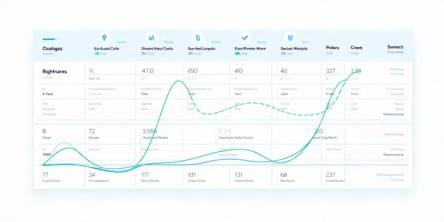7 Reasons Why React Native is Boon for Hybrid Mobile App Development

With the rapid growth of mobile technology, the demand for efficient, smoother, and faster applications has increased. Users want apps that are simple to use, have an excellent look, to build, and quick to implement. That’s why developers are in dilemma of choosing the right app development technology that meets modern user demands.
Native apps provide good UX/UI experience to users. However, they have some limitations. They can’t run on different OS platforms, and they take a significant amount of development time. On the other hand, hybrid apps are faster to develop and can run on different Operating Systems. Facebook’s React Native is one of the most reliable and rapidly revolutionizing frameworks for such hybrid app development.
What is React Native?
React Native is a ReactJS-based open-source JavaScript framework. It saves time and money by helping the developers build high-quality mobile apps using fewer resources. Such applications can work on both Android and iOS platforms as smoothly as native apps.
Top reasons why React Native is the future of hybrid apps
1. Better UI Development
React Native is UI-focused. It allows us to see everything in the script. It uses the Flexbox design engine and contains CSS-like stylesheets. That help developers to precisely mark the height, margins, width, border, font types, colors, and other UI components. As a result, they can develop a hybrid app with faster loading time and smooth UI experience compared to a typical cross-platform application.
2. Short Development Cycle
React Native framework has many ready-to-use components. Developers can use a tool like Redux to share a significant part of the code base between different OS in short timeframe. It means the development process becomes faster & efficient.
3. Native Performance
Android and iOS are the two majorly used mobile operating systems. Most of the cross-platform frameworks like Ionic or Cordova use JavaScript and HTML inside a WebView. That allows making calls to native API’s. While React Native components work as native platform widgets. Moreover, its reusable code helps to respond faster where native code is required for operation. Thus, the application will perform like an actual native application without WebView.
4. Simple to Understand
React Native has a wide range of easy to learn components, including filters, maps, and more. It is simple to integrate the React Native elements into an existing app, regardless of its current code. Whether the developer is new to JavaScript concepts or is an experienced coder, it provides positive development experience to all.
5. Write Once, Run Anywhere
React Native applications use the same UI building blocks used for native apps by putting React and JavaScript together. These reusable ‘local segments’ provides a consistent look and feel. Developers can integrate new features as plugins. They don’t need to manipulate the entire code to execute local operations. Thus, React Native indeed follows WORA (Write Once, Run Anywhere) code concept.
6. Live Updates
Developers can release the updates directly in the React Native apps. They don’t need to go through the “App Store” update cycle for that. The significant use of JavaScript makes a streamlined and straightforward update procedure.
7. Low-cost Maintenance
Native app development takes a double amount of time & money to make regular updates, troubleshooting, patching, and more. Unlike native development, React Native has an approachable framework that eliminates app versioning. Xamarin, PhoneGap, and other libraries help developers to deploy React Native applications in less time compared to native apps.
Bottom Line
React Native is easy to understand, fast to develop and performs well on different Operating Systems. It is one of the best JavaScript frameworks adopted for hybrid application development across the globe. It helps to design smooth, high-quality applications with low operation and maintenance costs. I have covered all the key points here. Developers can consider React Native for their next cross-platform mobile app development projects.
Similar Articles
Food delivery applications, including Uber Eats, DoorDash, Zomato, Swiggy, and Grubhub, generate large volumes of valuable data.
Modern businesses are drowning in communication overload, and much of that burden stems from outdated tools that simply can’t keep up
Building lending software isn’t just a technical project—it’s a business decision. Whether you're a fintech founder or part of a traditional lending institution trying to go digital, three questions will shape everything that follows
Learn why robust security is crucial for super app development. Explore key strategies and best practices for mobile app development security.
Walkie-talkies with an extensive reception capacity have changed significantly when it comes to portable communication by displaying cutting-edge features with seamless connectivity that covers more than just the state
USB-C technology has revolutionized the way we charge our devices, offering faster charging speeds, higher power delivery, and universal compatibility across multiple devices
Discover expert mobile app development strategies to create a viral app that attracts users and boosts engagement
Optimize app localization for iOS users across the EU with language, cultural, and regulatory adaptations. Engage users and boost retention with these tips!
Discover the top 10 mobile app development trends of 2024! Explore 5G, AI, AR/VR, blockchain, and more to stay ahead in the ever-evolving app development landscape.









